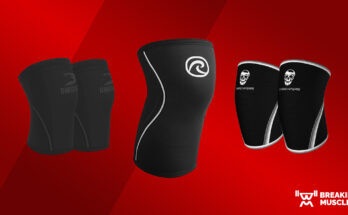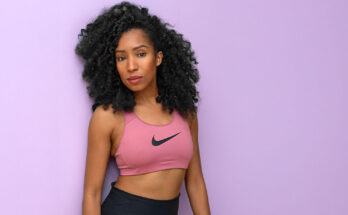What if I were to tell you there was an exercise that could actually help you get better at what you do, both in the gym and while performing your daily tasks?
Imagine: better balance, more overall strength, more muscle mass in your glutes and hamstrings… and mental benefits as well. Sounds amazing, right?
Enter the single-leg Romanian deadlift. A fantastic vertical hip-hinge exercise, the single-leg Romanian deadlift will help improve not only your strength and balance but also your mobility and coordination.
Whether you’re new to the single-leg Romanian deadlift or have found it to be a frustrating exercise in the past, this step-by-step guide will help you feel confident with the movement in no time.
In this article, you’ll find:
- Detailed instructions on how to master the single-leg Romanian deadlift.
- 6 technique tips to help you get the most out of the exercise while minimizing your risk of injury.
- 2 modifications you can take advantage of as you’re learning.
- Video demonstrations so you know exactly what to do each step of the way.
You’ll also learn how to incorporate this movement into your training sessions (and why you should!). Plus, make sure you read all the way through to the end so you don’t miss your two free bonus workouts.
Let’s dive in, starting with…
What Is a Single-Leg Romanian Deadlift?
The single-leg Romanian deadlift (single-leg RDL) is a vertical hip-hinge exercise in which you balance on one leg, hinge at the hips, lower your torso until it’s almost parallel with the floor, and then reverse the movement to return to your starting position.
The single-leg RDL with bodyweight works the posterior chain, including your hamstrings, glutes, back, and calves. Add weight, and you’ll also challenge your lats, traps, and forearms as well as increase strength in your erectors, scapula stabilizers, and anterior core. Additionally, the single-leg RDL requires a lot of stability in the ankles, knees, hips, and core.
What Are the Benefits of Single-Leg Romanian Deadlifts?
Performing single-leg RDLs will improve your balance and proprioception (your awareness of your body’s position and movement in space), both of which will have excellent carryover to other unilateral exercises, such as split squats, step-ups, and pistol squats. Additionally, single-leg RDLs can expose deficits or imbalances between your legs that bilateral exercises (e.g., standard Romanian deadlift) may mask.
Mastering the single-leg RDL provides you with unique opportunities to:
- Improve your single-leg stability, which is important when it comes to reducing your risk of injury as well as enhancing performance in many sports.
- Increase strength in your hamstrings, glutes, back, calves, and core.
- Improve stability and strength in your feet and ankles.
- Even out muscle imbalances and improve muscle symmetry.
- Increase your speed and power, which is beneficial to running, jumping, and other sport-specific movements.
- Improve your flexibility and mobility.
- Experiment with lots of different variations, which will keep your strength training fun and exciting.
Plus, being able to balance on one leg while performing an exercise will help you feel confident, capable, and strong!
But the benefits go even further. At Girls Gone Strong, we’re huge fans of having a growth mindset — or in other words, believing that your abilities and skills can be developed, improved upon, and cultivated through effort and practice.
Working on something that’s initially challenging — like a single-leg RDL — and seeing yourself improve with practice is incredibly gratifying.
Interested in a new performance goal? Learn exactly how to perform a proper pistol squat.
Step-by-Step Guide to Doing a Single-Leg Romanian Deadlift
Now you understand what a single-leg RDL is and why it’s beneficial to add to your training toolbox, it’s time to break down each step of the exercise so you know exactly what to do. After I go through the instructions, I’ll share six technique tips you can use to practice proper form until you’ve mastered the movement pattern.
How to Do a Single-Leg Romanian Deadlift
- Stand tall and tight (imagine holding your body in a plank, only standing).
- Root the foot of your right leg down into the floor by pressing evenly through your toes and your heel.
- Create a slight bend in your right knee.
- Extend your right arm to the side and make a fist; this will help you maintain tension in your upper body, balance through the movement, and keep your shoulders square.
- Slowly hinge at your hips, reaching your glutes toward the wall behind you.
- As you’re hinging your hips, lower your torso forward and then down, making sure not to bring your torso past parallel with the floor.
- Let your left leg raise only as far as is comfortable while making sure to maintain a neutral spine.
- Keep the hips and shoulders square (i.e., facing directly in front of you throughout the whole movement).
- Exhale with a tension breath, and press your right foot into the floor as you extend your hips to return to standing.
- Repeat on the other side.
6 Tips for Perfecting Your Single-Leg Romanian Deadlift Form
When it comes to the single-leg RDL, being very mindful of your alignment and form is paramount. Use the following tips to make sure you’re dialing in on these to get the most of the exercise.
Tip #1: Practice the Hip Hinge
Before you dive into the single-leg RDL, you need to know how to perform a proper hip hinge with both feet on the ground. Take some time to practice your hip hinge in a conventional deadlift or Romanian deadlift before you attempt to do it on one leg.
Tip #2: Practice the Single-Leg Romanian Deadlift Barefoot
Performing the single-leg RDL barefoot will help you root your foot down into the floor, making it easier to balance.
Tip #3: Practice With a Dowel to Ensure Proper Alignment
During a single-leg RDL, proper alignment is incredibly important. If you were to run a dowel or broomstick down your back during the exercise, it should touch in three spots:
- The back of your head
- Your upper back
- Your tailbone
By practicing with a dowel or broomstick, you’ll learn proper alignment. It’ll also help prevent you from rounding through your back, which is a common mistake.
Tip #4: Don’t Let Your Knee Collapse
It’s very common for the knee of the working leg to want to collapse inward when performing single-leg exercises like this. Make sure your knee tracks in the same direction as your toes through each and every rep.
Tip #5: Keep a Soft Bend in the Knee of the Working Leg
While it’s really tempting to lock out the knee of the working leg, this puts a lot of pressure on your joint and makes it more challenging to balance. Be sure to keep a soft bend in the knee of the working leg.
Tip #6: Keep Your Hips “Closed”
One of the most common mistakes we see with single-Leg RDLs is that folks want to “open up” their hip to the side. An easy fix for this is to flex the foot of your non-working leg and point your toes down toward the ground. This will help keep your hips square.
Are you ready for great results? Get the truth about 5 common fitness myths — and learn exactly what to do instead to reach your goals.
Single-Leg Romanian Deadlift Modifications
As you start working on your single-leg RDLs, you still might need a little extra support as you work on building your strength and balance. Here are two modified variations you can incorporate that will provide some assistance.
(Both of these are also wonderful variations for intermediate and advanced lifters who want to lift heavy but either need a little support or don’t want to worry about balance.)
Modification #1: Assisted Single-Leg Romanian Deadlift
Simply hold on to the side of a squat rack, the edge of a countertop, or anything else that is sturdy to help provide you with balance assistance.
Modification #2: Kickstand Single-Leg Romanian Deadlift
Stand with your feet about hip-width apart. Shift your weight to your right foot, then pick up the heel of your left foot and slide it directly back by about 12 inches. Focus on keeping the majority of your weight in your right foot, and only enough weight in your left foot to assist with your balance. Complete all of your reps on the right side, and then repeat the same steps for the left leg.
How to Incorporate Single-Leg Romanian Deadlifts into Your Training
If you’re new to single-leg RDLs, I’d like to encourage you to work them into your training at least twice per week, preferably at the beginning of your workout. Single-leg RDLs are challenging and require a lot of muscle recruitment, and practicing them early in your workout will ensure you’re fresh and will get more out of your practice.
Start with bodyweight only, and aim for 2–3 sets of 6–8 reps per side to start. Once you’re able to perform those with excellent form, you can move on to perform this exercise with dumbbells, kettlebells, a barbell, or a resistance band or cable. Always begin using lighter loads to make sure your technique remains on point.
Bonus: To make it even easier for you to try out single-leg RDLs, here are two complete workouts (no equipment needed!) you can try next time you’re ready to train.
15 Minute Full-Body Workout
Here’s your circuit:
- Bodyweight Single-Leg RDL
- Bear Crawl
- Lateral Lunge
- Side Plank
- Glute Bridge
And here’s exactly how you do it:
- Set a timer for 15 minutes
- Perform 8–10 reps of each exercise, resting as needed between exercises
- Complete the circuit as many times as you can in 15 minutes
That’s it!
20 Minute Lower-Body Workout
This workout is formatted a little differently. Instead of going through a single circuit, you’ll be working with supersets.
Superset 1
- Bodyweight Squat x 8–10 reps each side
- Bodyweight Single-Leg RDL x 8–10 reps each side
Superset 2
- Lunge x 10–12 reps each side
- Glute Bridge x 10–12 reps
Superset 3
- Front Plank x 3-5 reps, holding each rep for 5-10 seconds per rep,
- Side Plank x 3–5 reps, holding each rep for 5–10 seconds per side
Here’s how to do it:
- Perform 3–5 rounds of Superset 1.
- Rest 60 seconds.
- Perform 3–5 rounds of Superset 2.
- Rest 60 seconds.
- Perform 3–5 rounds of Superset 3.
- Celebrate and drink some water! You’re done!
And if you want to see even more workouts and exercise demos, make sure you follow Girls Gone Strong on Instagram (@thegirlsgonestrong).
Source link
Originally posted 2022-07-07 10:44:38.




